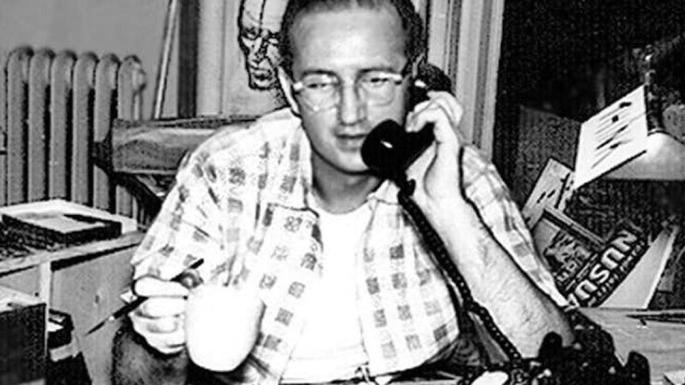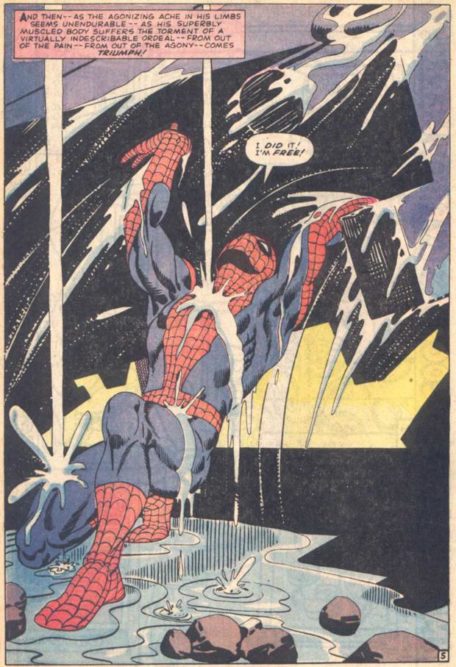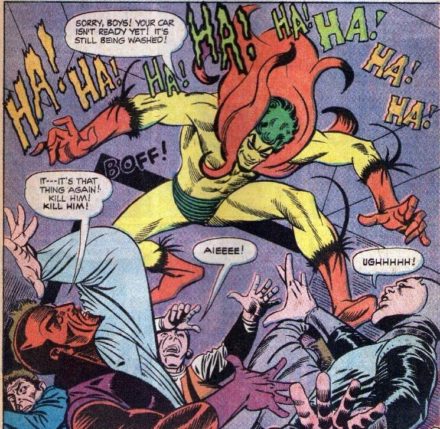
This past weekend, we lost a legend. Steve Ditko, master of comic art, passed away at age 90. Ditko is best known as the co-creator of Spider-Man, but also created characters such as Dr. Strange, Blue Beetle Ted Kord, The Question, Hawk and Dove, The Creeper, Captain Atom and many more. His work has left an indelible mark on comics through the work he did for Marvel, DC, Charlton and others and influenced so many creators. Creators such as Neil Gaiman, Stan Sakai, J.M. DeMatteis and more have cited him as an influence and it is through these creators that his legacy continues.
Steve Ditko was a different type of artist and creator, having a less bombastic feel to his art and instead having a more claustrophobic and paranoid atmosphere. But what made him stand out even more was how he adapted his art based on the book he worked on. Spider-Man made use of the nine panel layout but in certain stories, Ditko would deviate to create some of the most awe inspiring visuals in comics. Issue #33 is the best example as Spider-Man struggles to lift heavy machinery that is pinning him down. The layout of the page changes as the story progresses and peter struggles both physically and emotionally. He needs to get to medicine that will keep Aunt May alive and must overcome his own doubts. The climax of the sequence is a full page image of Spider-Man triumphantly lifting the machinery after being motivated by thoughts of friends and family. It was a powerful image and one that inspires artists to this day.

His work on Doctor Strange is no less impressive. The psychedelic nature of the art led to the comics being used in counter culture LSD parties in the 60’s, and many assumed that Ditko used drugs himself. However, Ditko revealed to colleagues that he visualized the scenes by putting a lot of thought into what an otherworldly dimension would truly look like. The visuals Steve Ditko drew for the Doctor Strange comics have arguably had more impact than any other artist save Jack Kirby, another legend of the form. Kirby represented the peak of what mainstream comics were, while Ditko represented the alternative styles, and the two artists laid the foundations for everyone later to follow.

One thing that must be mentioned was that Steve Ditko was a noted recluse and rejected attention. His own comments gave some insight as to what his thought process was there. He was on record as stating
“When I do a job, it’s not my personality that I’m offering the readers but my artwork. It’s not what I’m like that counts; It’s what I did and how well it was done. I produce a product, a comic art story. Steve Ditko is the brand name”
He believed in a day’s work for a day’s pay and was deeply influenced by the work of Ayn Rand and objectivism which influenced his character Mr. A and later the Question. Steve Ditko was the brand, but the person behind the brand was man that shied away from the spotlight and preferred to simply create his work as he saw fit. Going to companies like Charlton Comics was a risk for him, due to them paying artists less. But the pay didn’t matter to him even to the very end of his life. He wanted the creative freedom Charlton gave. His work At DC comics was also noteworthy, as the Creeper and Shade The Changing Man were comics that have influenced me as a writer.

There were many other comics done by Steve Ditko over the years. These ranged from Romance comics, crime comics to sci fi comics. It was his short sci-fi stories for Marvel that first got him noticed and his worked never stopped standing out. It was different than what else was on the market and the same can be said of Steve Ditko himself. There will never be another like him and we are poorer without him.

